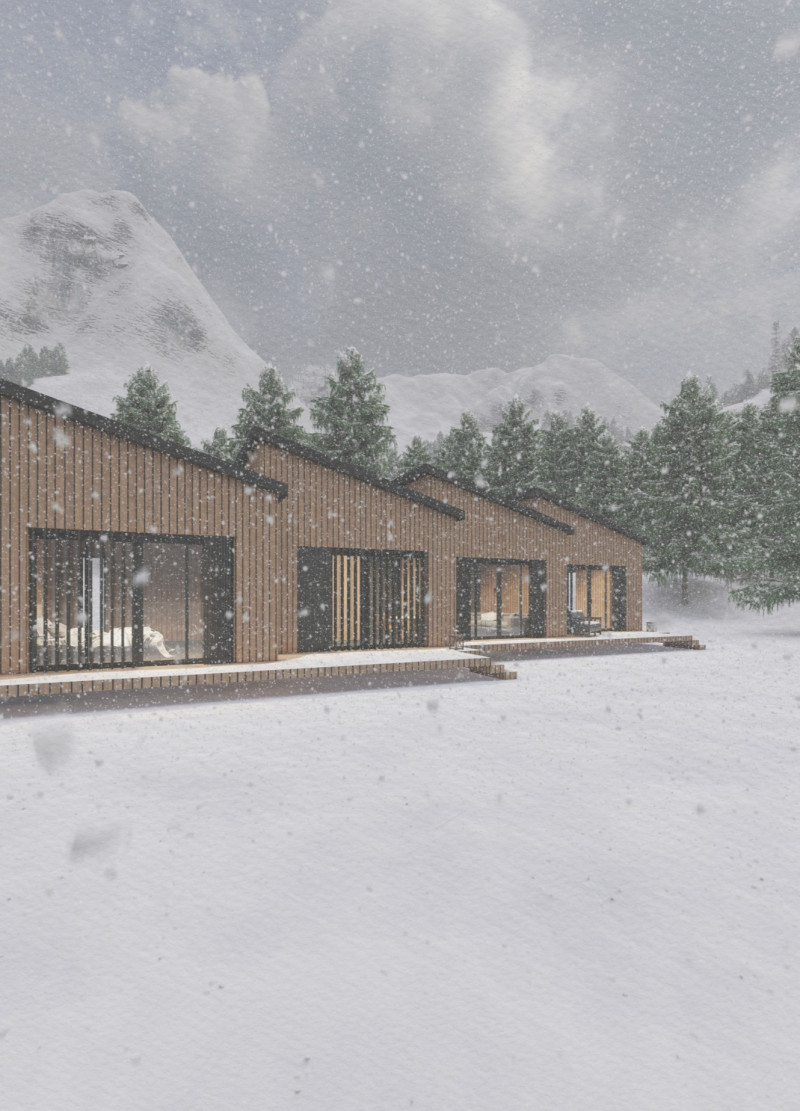5 key facts about this project
The Retreat Home occupies an area of 41 square meters per module, with the structure composed of four interchangeable sections that allow for flexible configurations based on user needs and site conditions. This modularity enhances the project's functionality, enabling easy assembly, transport, and relocation. A central element of the design is the emphasis on utilizing local materials and sustainable construction practices, which contribute to the house's functionality and environmental integrity.
The architectural design incorporates large windows that maximize natural light and provide panoramic views, enhancing the indoor-outdoor relationship. The use of thermally-treated wood cladding as an external finish contributes to the structural aesthetics while ensuring durability and environmental resistance. An angled roof design facilitates effective snow management, particularly crucial in regions with heavy winter precipitation.
Unique Aspects of the Retreat Home Design
What distinguishes the Retreat Home from similar architectural projects is its focus on sustainability and user empowerment through modularity. The integration of solar photovoltaic panels on the roof for renewable energy generation demonstrates a commitment to reducing reliance on non-renewable energy sources. Furthermore, rainwater harvesting systems are implemented to utilize natural precipitation effectively, promoting a low-impact lifestyle.
The architecture employs natural ventilation techniques that support airflow, minimizing the need for mechanical climate control systems. The thoughtful design allows individuals to customize their living spaces easily, catering to various preferences and requirements. By ensuring maximum privacy in bedrooms and creating inviting communal areas, the project balances social interaction with personal retreat.
Architectural Functionality and Material Use
The functional layout of the Retreat Home is straightforward and intuitive, accommodating key areas including a living room, kitchen, dining area, and bedrooms. The open-concept design encourages interaction among occupants while preserving personal space. Durable materials such as oriented strand board (OSB) and rock wool insulation play critical roles in enhancing the structure’s thermal performance and acoustics.
The incorporation of prefabricated concrete slabs ensures a sturdy foundation while speeding up construction. Additional elements, such as the use of a vapor barrier and wooden flooring, delineate the boundaries between interior and exterior spaces, creating a warm and inviting atmosphere.
In summary, the Retreat Home project exemplifies a modern architectural solution aimed at achieving sustainability through innovative design and functional adaptability. To gain deeper insights into the architectural plans, sections, designs, and ideas of this project, it is encouraged to explore the presentation further, which provides a comprehensive overview of its components and design intent.


























